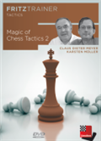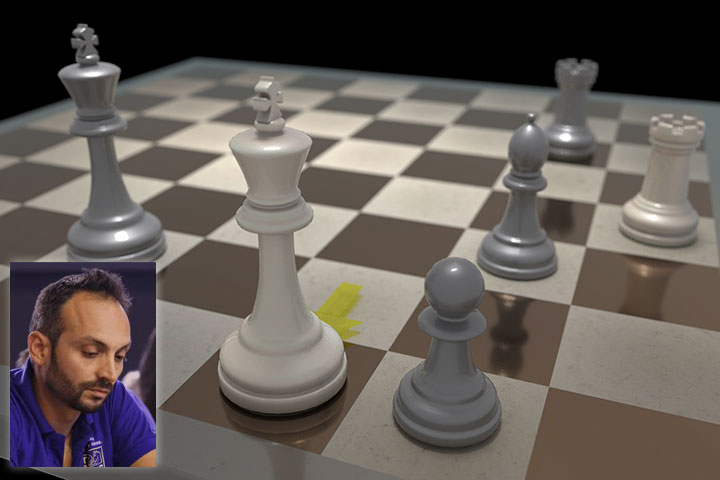Tips from grandmaster praxis
French Grandmaster Thal Abergel finished second in the recently held Championnat de Paris tournament. He scored seven points in nine rounds. Out of his six wins in the tournament, he rates the one against IM Christophe Sochaki as his best.
Abergel spent close to an hour on the eve of this match preparing against the 4.♕d4 variation of the Sicilian. He prepared this line knowing his opponent preferred capturing the d4 pawn with the queen instead of the knight.
It paid off as Abergel won in 59 moves. Here’s his game analysis:
Accept the Morra Gambit with confidence. Tame the Grand Prix Attack. Put fear into the heart of every tedious 2 c3 player. You can make 1...c5 a dangerous weapon whether it's an open or closed Sicilian.
The element of surprise
According to Abergel, preparing opponent-specific variations is one of the prime aspects of training before and during tournaments.
"Surprise is an important element in chess. I try not to stick to a particular line, so as to make it very difficult for my opponent to prepare."
"If an opponent plays a weird line then you should go for it and exploit it to your advantage. You can also prepare a long variation lasting 25 to 30 moves in order to trap an opponent."
Abergel contends the surprise element gives you a confidence boost which is already a good start.
‘Psychological preparation is the key’
 FM Claus Dieter Meyer has put under the microscope a comprehensive fund of topical and timeless games / fragments. On video Hamburg GM Dr. Karsten Müller has outlined corner points of Meyer's work and created 14 tests plus 10 interactive test sets.
FM Claus Dieter Meyer has put under the microscope a comprehensive fund of topical and timeless games / fragments. On video Hamburg GM Dr. Karsten Müller has outlined corner points of Meyer's work and created 14 tests plus 10 interactive test sets.Abergel says 80 percent of the tournament preparation is about psychology while 20 percent is about chess technique. This applies to everyone, from a club player to a grandmaster.
 “There are different methods of preparing yourself psychologically. I use a kind of auto-hypnosis technique by which I convince myself that I am very strong and efficient.
“There are different methods of preparing yourself psychologically. I use a kind of auto-hypnosis technique by which I convince myself that I am very strong and efficient.
In the second half of this tournament, I told myself that no matter who my opponent is, after 20 moves he will have big problems. This gave me a lot of confidence going into a game.”
“As a chess coach I have noticed that 90 percent of my students made big progress by focusing attention on the psychological aspect.”
For the chess preparation part, Abergel recommends devoting a majority of the time to studying tactics.
“I spent a lot of time studying tactics during my growth in chess. Even now, before a match, I solve a couple of tactical problems as a sort of warm-up. It makes your game sharper,” he says.
Training with chess software
According to Abergel, in this age, using chess software for training is essential for every competitor.
"I use ChessBase a lot. Currently, I train with ChessBase 15. It’s a big plus because while working on new openings and new positions. One can easily check the way strong players follow a particular line and the plans they make.
"It also allows you to know the statistics of the openings your next opponents have played. This makes preparing against them easier. Furthermore, an essential function of the ChessBase software is that it allows you to create your own databases and embed games into it", he says.
The entry into the chess cosmos. ChessBase 15 program + new Big Database 2019 (7.6 million uncommented games). Plus 3 issues ChessBase Magazine and CB Premium membership for 6 months!
Links


















 “There are different methods of preparing yourself psychologically. I use a kind of auto-hypnosis technique by which I convince myself that I am very strong and efficient.
“There are different methods of preparing yourself psychologically. I use a kind of auto-hypnosis technique by which I convince myself that I am very strong and efficient.




